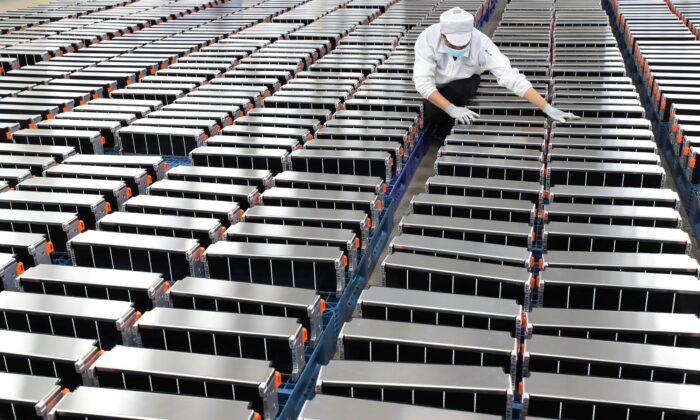While electric vehicle sales have remained strong so far this year with 2 million electric cars sold worldwide in the first quarter, IEA said that further efforts to diversify battery manufacturing and critical mineral supplies are needed to reduce the risks of bottlenecks and increased prices going forward.
A growing number of countries and carmakers across the globe have set out ambitious vehicle electrification targets for the coming decades amid a push to address climate change.
However, IEA warned that soaring prices for some critical minerals essential for battery manufacturing, supply chain disruptions in the wake of the COVID-19 pandemic lockdowns in China, and Russia’s invasion of Ukraine remain the greatest obstacles to strong electric vehicle sales.
The biggest battery manufacturer in the world is China and more than half of all lithium, cobalt, and graphite processing and refining capacity is located in China.
In 2021, more than half of all electric vehicles were assembled in China, which is set to maintain its manufacturing dominance.
“In the longer term, greater efforts are needed to roll out enough charging infrastructure to service the expected growth in electric car sales,” the report also noted.
Supply chain disruptions caused by Russia’s invasion of Ukraine have already pushed up the price of key components used in electric vehicles such as cobalt and nickel—the most important of these components—given that Russia is the world’s third-largest supplier.
Russia is also home to the world’s largest nickel producer, Norilsk Nickel, which produced 145,817 metric tons of nickel in 2021 and is also a large provider of aluminum, which is used in batteries.
Meanwhile, lithium, another key component in electric vehicles as well as other electric devices, has seen unprecedented demand as vehicle makers move to battery-powered cars and away from fossil fuels.
The raw materials that make up the key components in batteries are located deep in the earth’s core and new mining infrastructures take time to set up. The production capacity of existing facilities is also still relatively low, further limiting supply. China produces three-quarters of all lithium-ion batteries.
Prices for lithium were over seven times higher in May 2022 than at the start of 2021, according to IEA, while prices for cobalt and nickel also rose.
“All else being equal, the cost of battery packs could increase by 15 percent if these prices stay around current levels, which would reverse several years of declines,” the agency warned.
IEA Executive Director Fatih Birol said, “Policy makers, industry executives, and investors need to be highly vigilant and resourceful in order to reduce the risks of supply disruptions and ensure sustainable supplies of critical minerals.”
The IEA said it is “working with governments around the world on how to strategically manage resources of critical minerals that are needed for electric vehicles and other key clean energy technologies.”





